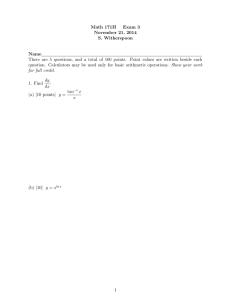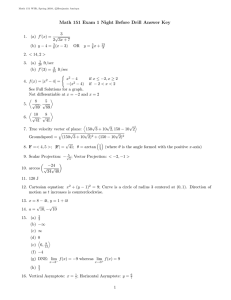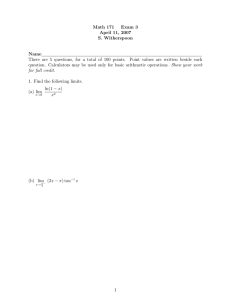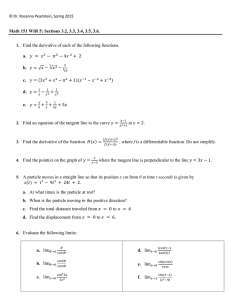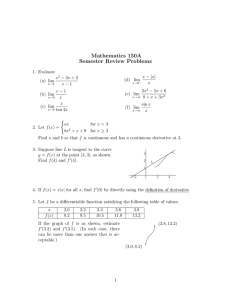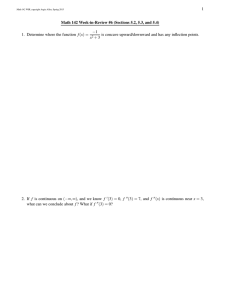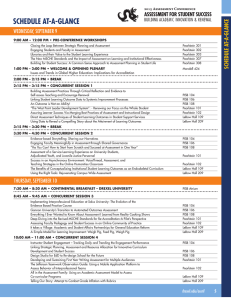Sections 5.1, 5.2, 5.3, 5.5.
advertisement
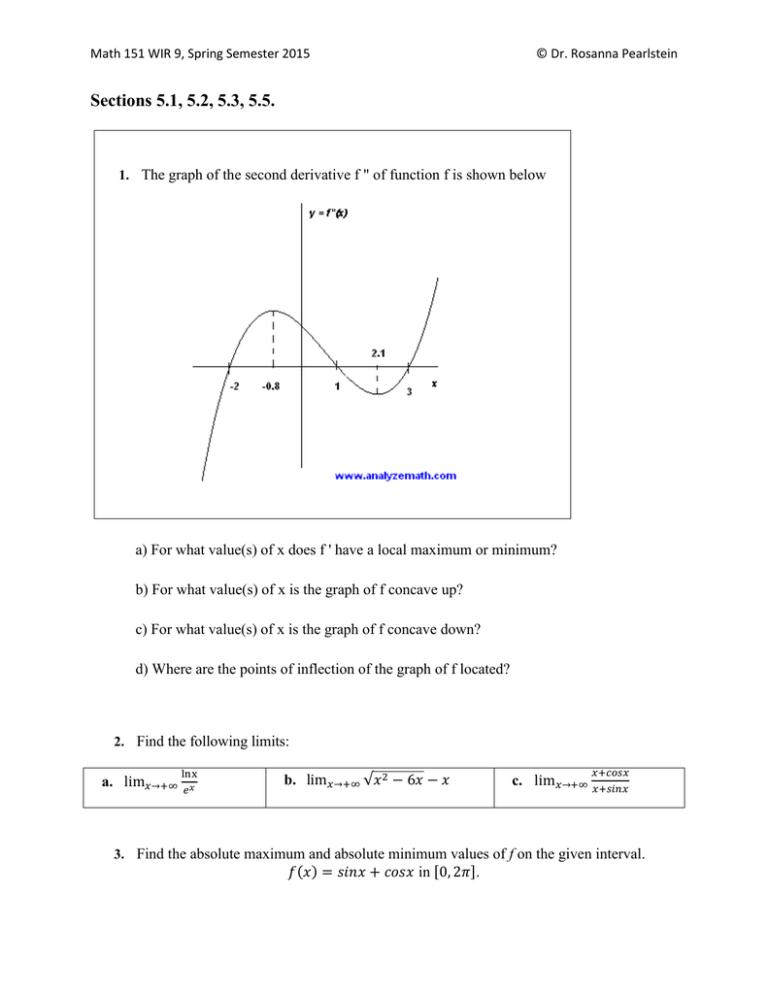
Math 151 WIR 9, Spring Semester 2015 © Dr. Rosanna Pearlstein Sections 5.1, 5.2, 5.3, 5.5. 1. The graph of the second derivative f " of function f is shown below a) For what value(s) of x does f ' have a local maximum or minimum? b) For what value(s) of x is the graph of f concave up? c) For what value(s) of x is the graph of f concave down? d) Where are the points of inflection of the graph of f located? 2. Find the following limits: a. lim𝑥→+∞ lnx 𝑒𝑥 b. lim𝑥→+∞ √𝑥 2 − 6𝑥 − 𝑥 𝑥+𝑐𝑜𝑠𝑥 c. lim𝑥→+∞ 𝑥+𝑠𝑖𝑛𝑥 3. Find the absolute maximum and absolute minimum values of f on the given interval. 𝑓(𝑥) = 𝑠𝑖𝑛𝑥 + 𝑐𝑜𝑠𝑥 in [0, 2𝜋]. Math 151 WIR 9, Spring Semester 2015 © Dr. Rosanna Pearlstein 4. Do all the necessary math to sketch the graph of 𝑓(𝑥) = 𝑥𝑒 −𝑥 . 5. Find the absolute maximum value and the absolute minimum value attained by 1 𝑓(𝑥) = 𝑥(1−𝑥) in the interval [2,3]. 6. Do all the necessary math to sketch the graph of 𝑓(𝑥) = 𝑥 2 + 16 𝑥 . 7. Find the absolute maximum value and the absolute minimum value attained by 𝑓(𝑥) = 𝑥1/2 + 𝑥 3/2 in the interval [0,4]. 8. What angle between two edges of length 3 will result in an isosceles triangle with the largest area? (See diagram.) 9. A cylindrical can is made to hold 1 liter of oil. Find the dimensions of the can that will minimize the cost of the metal to manufacture the can. 10. Find all points on the curve 𝑥 2 − 𝑦 2 = 1 that are closest to the point (0, 2).


